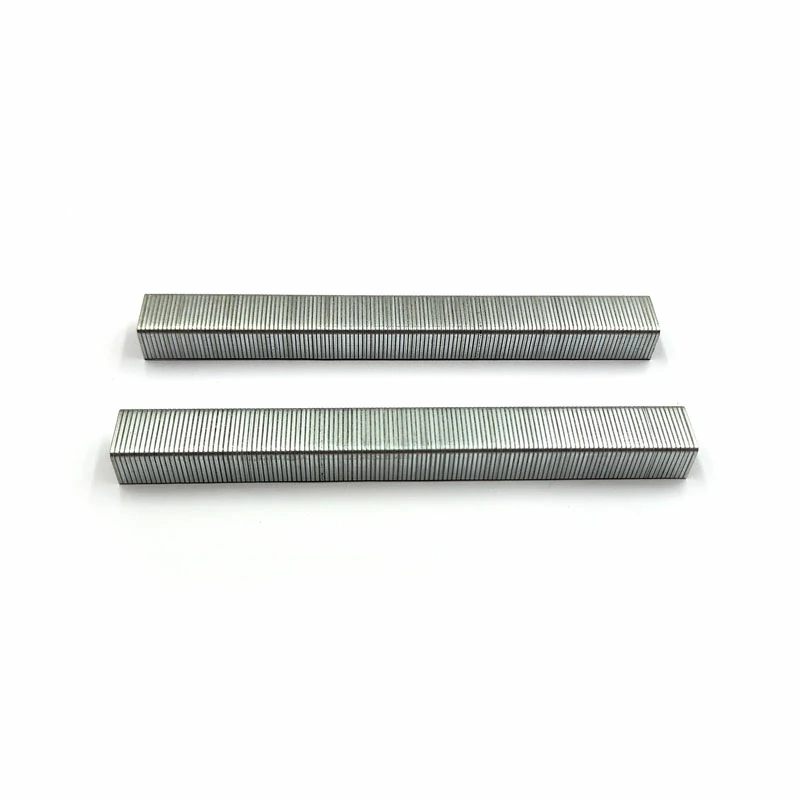The material composition of 22 gauge staples plays a crucial role in determining their performance characteristics, including strength, durability, corrosion resistance, and suitability for specific applications. Common materials used for manufacturing staples include steel and various coatings for protection.
Here’s how the material composition affects the performance of 22 gauge staples:
- Steel Type:
- The primary material for staples is steel, which can vary in type. Carbon steel is commonly used, and it provides a good balance of strength and affordability. Stainless steel is another option, offering enhanced corrosion resistance.
- Strength and Durability:
- The type and quality of steel influence the staples’ overall strength and durability. High-quality steel provides better resistance to bending and ensures that staples maintain their structural integrity during fastening.
- Corrosion Resistance:
- Staples are often subject to environmental conditions that may lead to corrosion. Stainless steel staples offer excellent corrosion resistance, making them suitable for outdoor or high-humidity applications. Carbon steel staples may be coated to enhance corrosion resistance.
- Coatings:
- Some 22 gauge staples may have coatings applied to the surface for additional protection against corrosion and to improve their performance. Common coatings include galvanized, zinc-plated, or polymer coatings.
- Galvanized Staples:
- Galvanized staples are coated with a layer of zinc, providing corrosion resistance. They are suitable for indoor and outdoor applications and offer better protection against rust compared to non-coated staples.
- Zinc-Plated Staples:
- Similar to galvanized staples, zinc-plated staples have a zinc coating that enhances corrosion resistance. These staples are often used for general-purpose applications.
- Stainless Steel Staples:
- Stainless steel staples are highly resistant to rust and corrosion, making them suitable for applications where exposure to moisture or harsh weather conditions is a concern. They are often used in marine environments or outdoor construction.
- Rust Prevention:
- The material composition, 22 gauge staples along with coatings, contributes to the prevention of rust and corrosion. Rust-resistant staples are essential for maintaining the integrity of the fastened materials over time.
- Application-Specific Considerations:
- The choice of material composition depends on the specific application. For example, if staples are used in outdoor construction, a material with enhanced corrosion resistance may be preferred.
- Compatibility with Stapler:
- The material composition must be compatible with the stapler or nail gun being used. Different materials may have varying levels of hardness, and the stapler must be able to drive the staples effectively.
- Environmental Impact:
- Consideration of the environmental impact of the staple material is increasingly important. Some materials may be more eco-friendly or recyclable than others.
In summary, the material composition of 22 gauge staples, primarily steel and coatings, influences their strength, durability, corrosion resistance, and overall performance. When selecting staples for a specific application, it’s essential to consider environmental conditions, the potential for corrosion, and the desired level of strength to ensure optimal performance and longevity.
